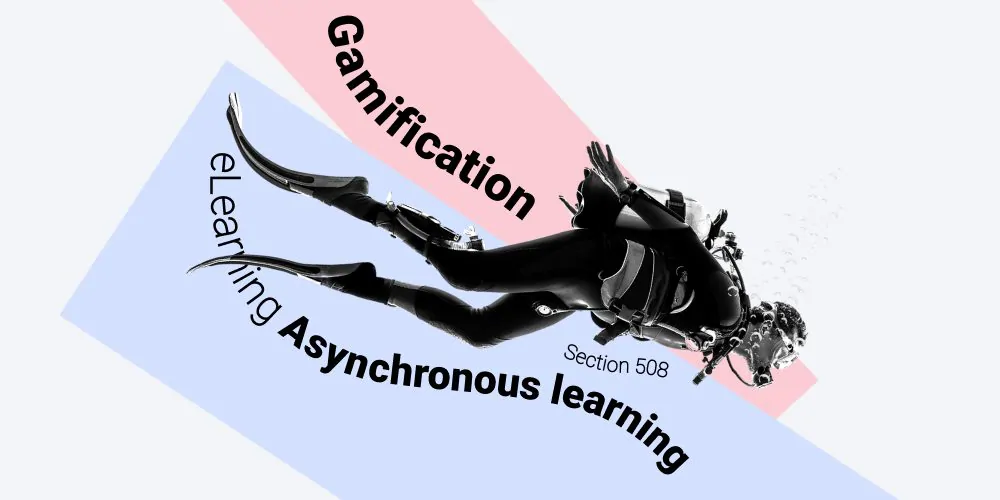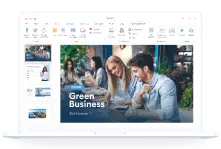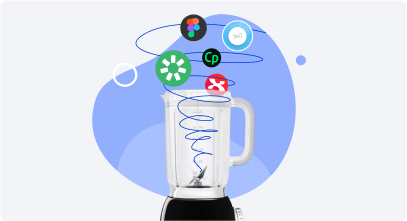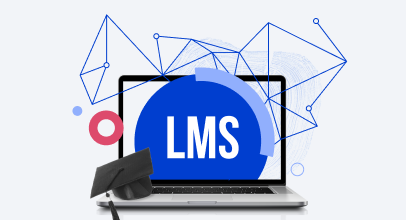eLearning Glossary: Timely Terms for Teaching Nerds

Does eLearning seem to involve a never-ending tsunami of terminology? We get you. And that’s why we ‘amassed’ this glossary… so you can come to terms with terms. Keep this eLearning glossary on your favorites list and we’ll navigate it together!
70:20:10 learning model
A learning formula developed from a survey conducted by Morgan McCall, Robert Eichinger, and Michael Lombardo at the Center for Creative Leadership, proposing that learning should come from a variety of sources: 70% while on the job; 20% from peers and colleagues; 10% from classroom-style traditional training.
ADDIE
A five-stage development process used by instructional designers to develop courses; an acronym for Analysis, Design, Development, Implementation, and Evaluation.
The ADDIE Model for eLearning Instructional Design →
AICC
Universal eLearning specifications established by the Aviation Industry Computer-Based Training Committee (the source of the acronym). SCORM’s predecessor. The AICC standard uses the HTTP AICC Communication Protocol (HACP) to communicate between an LMS and the course content.
AICC vs SCORM vs xAPI vs cmi5 →
Andragogy
A learner-centered educational approach; adult education focusing more on process. It is described by its creator, Malcolm Knowles (1968), as the art and science of helping adults learn.
Asynchronous learning
Learning materials and programs that are engaged in by learners at different times and at individual paces.
Asynchronous Learning Simply Put →
Authoring tool
A type of software that allows you to create digital training content, convert it into an eLearning format, and distribute it among learners via a learning management system (LMS) or via the Web.
Blended learning
Synchronous and asynchronous learning used together. For example: a course’s teacher(s) can conduct the course in stages or modules in real-time (synchronous) and assign the learners “homework” to be completed on their own between modules (asynchronous).
Branching
The installation of different content routes in online courses, quizzes, or simulations that are dependent upon the learner’s input.
Cmi5
Computer managed instruction 5 is an eLearning specification or ‘profile’ with the capacities of both SCORM and xAPI for using the xAPI specification with traditional learning management (LMS) systems.
Compliance training
Education, usually mandatory, of employees on work-related laws, regulations, and company policies.
What is Compliance Training in Simple Terms? →
Computer-based learning (CBL)
Learning that utilizes computers as a key component of the educational environment. With eLearning, this occurs both online and offline, with or without the direct real-time interaction of a teacher. Also known as computer-aided instruction.
50 Best Computer-Based Training Tools →
Content curation
The location, gathering, selection, and organization of online content that has relevance for your learners.
Corporate training (workplace/employee training)
Training provided to employees that can include onboarding, on-the-job training, and courses – whether in a classroom setting or online – with the purpose of optimizing the employee’s job-related knowledge, skills, and efficacy.
Courseware
Software designed for eLearning, whether the learning takes place in a classroom or online.
Articulate 360 vs. Adobe Captivate 2019 vs. iSpring Suite →
Customer service training
Courses that instruct how to interact with customers in order to maximize customer satisfaction and handle difficult situations.
How to Create Customer Service Training Courses →
Dialog/conversation simulation
A mockup (role play) of an interaction between the employee and a client or work colleague, aimed at preparing the learner with an actual situation that could occur in the future. Typically used to master communication skills.
How to Create Dialog Simulations →
Digital flipbook
An interactive ebook resembling a printed book, including page-turning, page shadows, etc. In eLearning, this is typically an ebook that can be uploaded to an LMS and tracked how far readers have progressed.
How to Create a Digital Flipbook →
eLearning (online learning)
Learning done with the help of electronic apparatuses like computers, tablets, and smartphones, and courses provided on the internet or the intranet.
eLearning standard
A set of rules to standardize eLearning content, authoring software, and learning management systems (LMSs) in order to ensure compatibility. eLearning standards include AICC, SCORM, xAPI, and Cmi5.
eLearning Standards Comparison →
Experiential learning
A process whereby one learns by performing the task to be learned from direct experiences outside of a traditional academic setting.
Gamification
The process of making learning more enjoyable and engaging by including game playing elements such as competition, points, and badges – most often used in LMSs.
Gamification vs. Game-Based Learning →
Hard skills
Abilities to execute more technical/mechanical tasks that can be trained/taught, such as writing, (foreign) language, typing, and computer programming and operation.
HTML5 (Hypertext Markup Language revision 5)
The fifth major revision of HTML – a programming language used to structure and present content on the Web.
The 5 Best HTML5 Authoring Tools →
Immersive learning
A learning process wherein the learner is completely involved, either physically or virtually, as though experiencing an actual situation.
Induction training
The systematic orientation of new employees to facilitate their role in an organization.
Informal learning
Non-formal, self-directed learning that occurs outside of a structured, traditional classroom environment.
Instructional design
ID is the art and science of creating effective and engaging learning products and experiences, often using an eLearning authoring tool.
What is Instructional Design? →
Instructor-led training (ILT)
Real-time courses led by an instructor, either in a physical classroom setting or over the Internet.
Interactive learning
Learning in which participants engage in the educational process rather than passively listen to the teacher’s lecture or memorize the information mechanically. Learners are invited to interact with content through technology (via simulations, quizzes, game-based learning activities, and interactive videos), or participate through role-playing and other group exercises.
Making Your Online Course Interactive →
Job aid
A visual instruction, such as a diagram, sign, or checklist, for a job-related task.
Just-in-time training (JITT)
On-demand training made available when the learner needs it – usually smaller training modules that are often accessed on a learner’s mobile device while on the job.
Kirkpatrick Model
The standard model for analysis and evaluation of the results of training and educational programs, created by Donald Kirkpatrick in 1959. The four levels are: 1) reaction, 2) learning, 3) behavioral change, and 4) organizational performance.
Learning content management system (LCMS)
Synonymous with learning management system (LMS). Previously distinguished from LMS, the two are now typically used interchangeably, as they both manage the creation, storage, and delivery of eLearning content.
Learning management system (LMS)
A software application for managing eLearning. An LMS allows educators to upload eLearning courses, invite learners to take the courses that they have been given access to, and track and evaluate the learners’ results. Some LMSs also provide tools for creating eLearning courses.
Learning methods
The means by which learning is enacted; they can be active or passive and include eLearning (synchronous, asynchronous, or blended – whether instructor-led or prerecorded), microlearning, scenario-based, immersive, social, informal, interactive, self-paced, inquiry-based, audio, video, learner-centered, hands-on, learning by teaching, and observational methods, among others.
6 Training Methods in the Workplace →
Learning objectives
The clearly stated aims of what a learner will be enabled to do at the end of a lesson or course.
Learning Goals and Objectives →
Learning record store (LRS)
A data storage system that archives the activity records of connected learning systems, applications, and content. It is an essential component in the process flow for using the xAPI standard.
Learning styles
The different manners in which someone learns. These can include visual, auditory, verbal, logical, social, solitary, or kinesthetic and can involve factors such as cognition, emotion, environment, and previous experience.
Microlearning
Educational content organized into smaller “bite-sized” short-term modules. These modules often address a single issue and can serve as standalone mini-courses or parts of a larger program.
Mobile learning
Learning that can be realized at any time or place by means of smartphones, tablets, and other mobile devices.
MOOC (Massive Open Online Course)
A free course available via the Internet to a very large number of people.
Off-the-shelf content
Ready-made or ‘generic’ content that is typically ready for use upon purchase.
Onboarding
Orientation and integration of a new employee into a company by explaining the organization’s products, procedures, and guidelines and introducing them to their coworkers.
Online assessment
Evaluation of a learner’s knowledge, abilities, or behaviors that typically uses a test or quiz format and is conducted over the Internet. Also referred to as electronic assessment, digital assessment, e-assessment, or computer-based assessment.
How to Make Effective Educational Quizzes →
Online course
A training that is taken online and can be real-time and instructor-led or taken at the learner’s preferred time and pace.
How to Create an Online Course →
On-the-job training
Training provided at the workplace by observing and getting hands-on experience with new work-related tasks, often under supervision.
Open source software
A software, the source code which is available to the general public and anyone can use, distribute and/or change as desired.
Top 7 Free eLearning Authoring Tools →
Rapid eLearning
The process of using the appropriate software and tools for creating eLearning products quickly – in weeks instead of several months. It is especially relevant when you need to rapidly respond to organizational changes/update and have legacy content in formats that are easy to repurpose.
Remote training
Electronic training for those who are not at the company’s office – e.g., at home or another remote location – utilizing electronic methods such as webinars (real-time or prerecorded), online meetings, web conferencing, eLearning courses (instructor-led or prerecorded), and podcasts.
How to Train Remote Employees →
ROI (Return On Investment)
A ratio of the profit received compared to an initial business investment. In terms of eLearning, it represents the results or profits realized as compared to the initial investment in software or online training.
How to Measure eLearning ROI →
Sales training
Courses that improve the seller’s knowledge and skills in order to attract more customers and maximize sales.
eLearning for Sales Training →
Scenario-based learning (SBL)
A learning approach that uses case studies or problematic situations that learners need to understand or resolve in preparation for handling actual situations.
SCORM
Shareable Content Object Reference Model is a set of standards and specifications that allows SCORM-compliant content to be to be shared, accessed and tracked in any LMS that supports SCORM.
SCORM wrapper
A software app that wraps your presentations and other learning content into a SCORM “coating” and outputs files that can be uploaded to an LMS.
Section 508
An amendment to the United States Workforce Rehabilitation Act of 1973, requiring Federal agencies to make their electronic and information technology accessible to people with disabilities. In eLearning, it implies that all the training content should be available for users with a visual impairment.
How to Create Section 508 Compliant Content →
Self-paced learning
Learning carried out independently at one’s own speed that typically includes online courses, text or video tutorials or recordings of classes, and other permanent content.
Serious game
An electronic game whose main purpose is not to simply entertain but to teach or train in areas such as health care, education, advertising, etc. It uses storytelling, game mechanics, immersive graphics, and other game elements.
SME (Subject Matter Expert)
An authority in a specific area of eLearning who shares their expertise and is often directly involved in the course development process.
Social learning
A process in which one learns outside the classroom by interacting with their peers for just-in-time learning and skill acquisition. Social learning includes a lot of behaviors like imitation, observational learning, and discussions.
Soft skills
Abilities in terms of being sociable and sensible that facilitate working with others. They include communication, empathy, time management, teamwork, and leadership traits, among others.
Soft Skills Training in the Workplace →
Stakeholder
Anyone interested in the successful completion of an eLearning project, including those at either end of the process: developers, learners, customers, etc.
Storyboard
A document that lays out the progression in an eLearning course, screen by screen, specifying text, audio, and video elements.
Synchronous learning
Real-time, instructor-led online classes conducted with groups of learners who can interact with the teacher and each other.
Synchronous Learning Simply Put →
Talent management system
Software that allows for the management of workforce talent, in terms of recruitment and onboarding, performance management, learning and development, and compensation management.
Training needs analysis (TNA)
The process whereby a company identifies employees’ need for the training and development that will allow them to do their job more effectively.
Training Needs Assessment & Analysis →
Video-based learning
eLearning based on watching instructional videos and screencasts, as opposed to reading.
Virtual classroom
An online, real-time, instructor-led learning environment with the participation of one or more learners, typically conducted with eLearning tools.
Web-based training
Training conducted over the Internet that can be either instructor-led (real-time) or self-paced (at the time and pace of one’s choosing).
Web-Based Training for Employees →
Webinar
A real-time online seminar (Web + seminar) during which the audience can participate through interactive means, such as asking or responding to questions posed by the presenter(s).
Wiki
A publication edited and managed by its audience. It can be open to the public or limited to members of an organization, in the case of an internal knowledge base.
xAPI (Tin Can)
Experience API is an eLearning standard that allows the tracking (storage and retrieval) of records about the wide range of activities a learner has, and the sharing of these data across platforms – both online and offline. Seen as SCORM’s successor.
Well, now you have it. You’re in the know, and not a moment too soon. The future of eLearning is now (and forever)! Fasten your safety belt and stay with us, because eLearning is just getting started and “the cloud’s the limit.”










